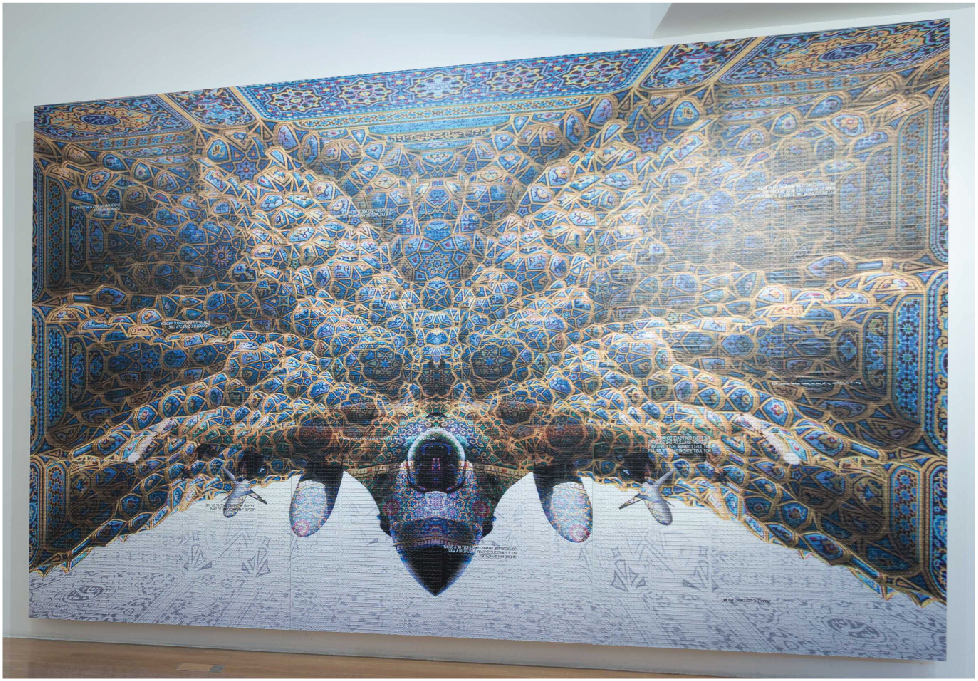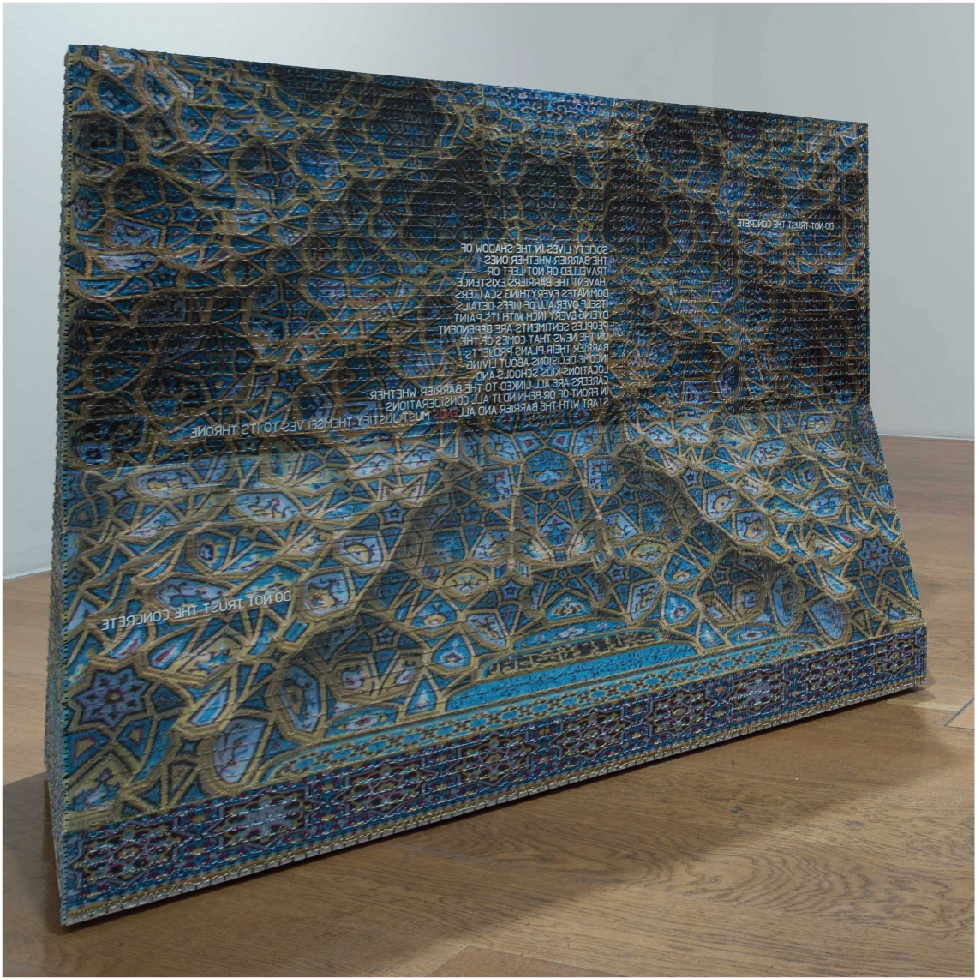Does Concrete Protect You?–Abdulnasser Gharem

Installation image, GÇÿRicochetGÇÖ, Asia House
Is an internationally renowned artist from Saudi Arabia. His exhibition list includes the Venice Biennial, Sharjah Biennial, and Berlin Biennale. He is the founder of an art initiative called Edge of Arabia. In an interview with Garret Harris at First.com Abdulnasser Gharem give reason to his part in altering the Saudi Contemporary Art scene (maybe even kick starting the art scene itself ), “This country is full of people who have the [necessary] money, but the problem will be getting the government’s permission to launch the foundation. Such art foundations are not part of our culture.”
In October 12, 2015 Abdulnasser Gharem launched the first international project with Gharem Studio (GS) at Asia House during Frieze Art Fair in London called “Richochet”. This Exhibition showcase the latest developments in Contemporary Art from Saudi Arabia. The participating artists are Shaweesh, Dhafer Alshehr, Ajlan Gharem, Njoud Alanbari and Abdulnasser Gharem.
These emerging artists have been developing their artistic practice at GS, a space established by Abdulnasser Gharem in 2010 in the capital city of Riyadh, in order to teach the next generation about contemporary art. The participating artists have come together in recent years as part of an organic and progressive movement established through GS. Due to an absence of art schools in the Gulf countries, GS is one of the only places in Saudi Arabia where artists can talk freely and learn about contemporary art. Enabling new forms of cultural expression through a program of educational activity, GS creates a framework for artists to explore their individual and collective vision of the local culture, and its interaction with the rest of the world. Taking the concept of ‘ricochet’ as its central theme, the exhibition investigates the idea that actions taken by a country’s authorities could cause direct, or indirect, chain reactions. (source Gharem Studio).

‘Ricochet’, Digital print and industrial lacquer paint on aluminium
This large-scale painting features an image of a richly ornamented Mosque ceiling shockingly metamorphosing into an armed fighter jet. The beautiful and elaborate ornamentation of the Mosque’s ceiling is a reminder of the idea of Heaven. The artwork reflects the will of the artist to underline the reality of religion used as a pretext for war. The concept of heaven should bring peace and bliss to the pious people, but in the reality of war bombs are falling from the sky. In ‘Ricochet’, Gharem uses the fighter plane, a sophisticated apparatus of warfare, to represent the use of military strategies employed against various Arab States. Islamic geometric patterns are asymmetrically re-arranged to represent warfare strategies that disorganise and delegitimise the social fabric and ideologies of Arab states, all in the guise of beauty. The overall aesthetic of the work is a manifestation of contemporary ornamentation and enchantment of Fourth Generation warfare. Gharem demonstrates that military insurgence and conflict, as seen in Islamic history, is transient and ultimately what prevails is peace and unity.
This sculpture revolves around a recurring theme in Gharem’s work – an exploration of the wave of terrorist attacks that Saudi Arabia experienced between 2003 and 2005. In response to these events, the physical appearance of Saudi Arabia began to change: barriers appeared in their thousands outside embassies, hotels, foreign compounds, the offices of conglomerates and government buildings. These barriers were usually made up of interlinked concrete segments, each one bottom-heavy with a triangular base to keep it to the ground. To make these buildings more secure, countless roads were blocked, creating detours and diversions. In 2009, Gharem began to apply the logic of his initial stamp paintings to these concrete barriers and the detour signs that had appeared nationwide. Gharem wanted to examine the consequences of placing your trust in concrete: “Concrete walls like this appear not just to protect people” he says, “but to keep knowledge and ideologies separated from one another. Look at the Berlin Wall, or the walls that went up in Baghdad to keep the Sunni and Shi’a apart. Does concrete protect you? Not always. We should be educating people, giving them opportunities, not building these barriers. My message is simple: don’t put your trust in concrete.”

‘Concrete Block’, Digital print and industrial lacquer paint on rubber stamps on plywood


